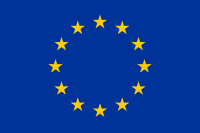8 Impact Areas
Explore the eight impact areas of digital cultural participation
From the existing literature, but also the direct observation of the relations that occur daily online thanks to the huge amount of creative material created, shared and remixed, we can say that cooperative learning and open collaborative processes generated by active cultural participation, lead to innovation and new forms of knowledge.
Innovation is not one simple consequence of investments in research and development, but it has to do with the creation of a social environment that facilitates the generation and dissemination of new ideas and new processes, through the action and cooperation of diverse social actors involved (Sacco & Calveri, 2021).
The effects that active engagement with digital cultural heritage can produce in terms of creating a social environment that leads to innovation, may exceed the tangible and direct economic impact of the cultural project itself, generating repercussions on the entire economic and social system. In particular, with cultural participation, the more it is linked to the production and dissemination of content and not only to their passive use, the more it accustoms and enables people to become familiar with the “otherness”, because it promotes a "cognitive-motivational gymnastics'' that predisposes people to innovation. This intuition is reflected indeed in the evident and strong correlation between the rates of active cultural participation and the innovative performance of some specific countries. It is no coincidence that the countries at the top of the European cultural participation ranking, such as Sweden, Denmark and the Netherland, are those in which there is the greatest propensity of innovative companies to invest in cultural projects and even to integrate cultural and creative professionals within its human resources and own internal processes (Sacco&Teti, 2017).
Moreover, cultural participation in arts and the creative sector teach “proactivity”, a fundamental element of social innovation, that has to do with collaboration and the co-creation of creative content. This can be effectively considered a bottom-up capacity-building process, and today, this process is boosted by the digital possibilities that online open platforms provide to anyone. Today, there is an increasing demand for new digital innovation-driven business models, and co-creative and participative trends hold great promise for the future business development of cultural and creative production: It is every day clearer to the economic sector that forms of culture-related entrepreneurship could be a good way to address new societal challenges.




